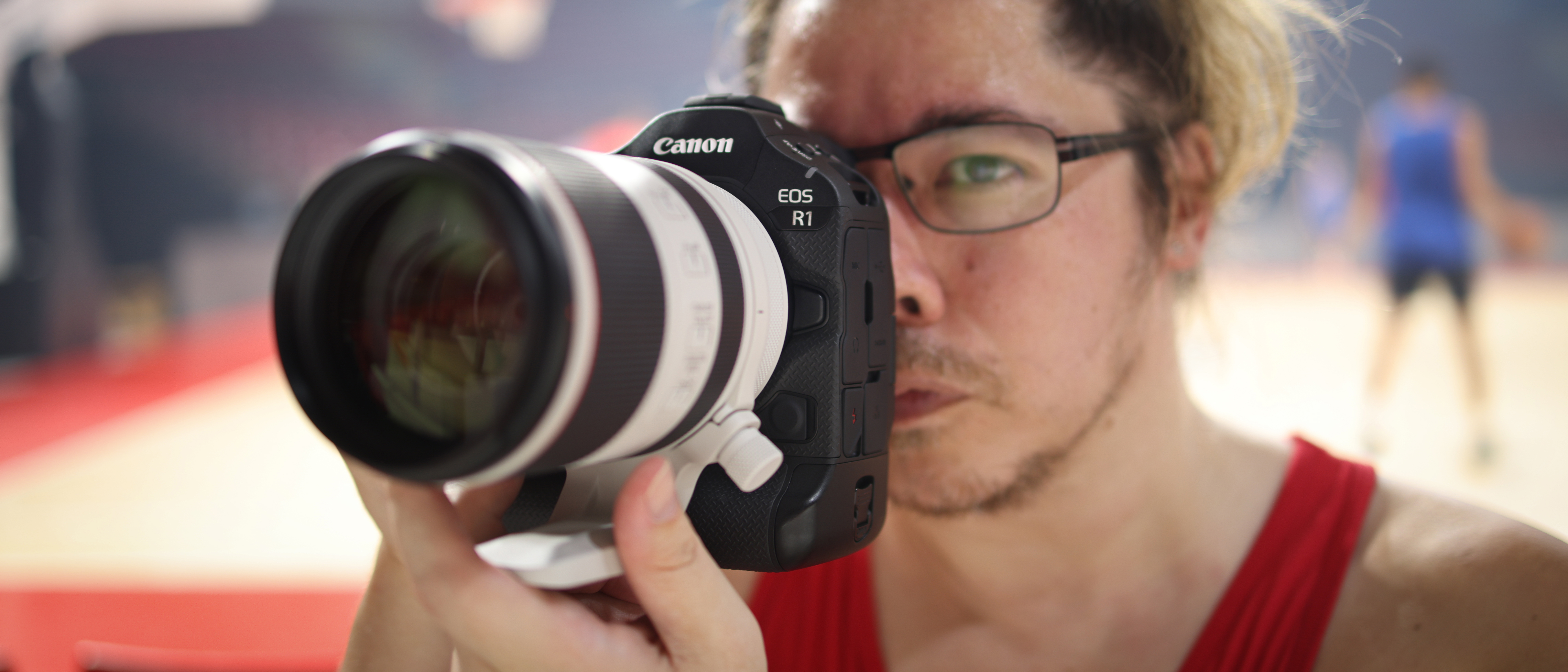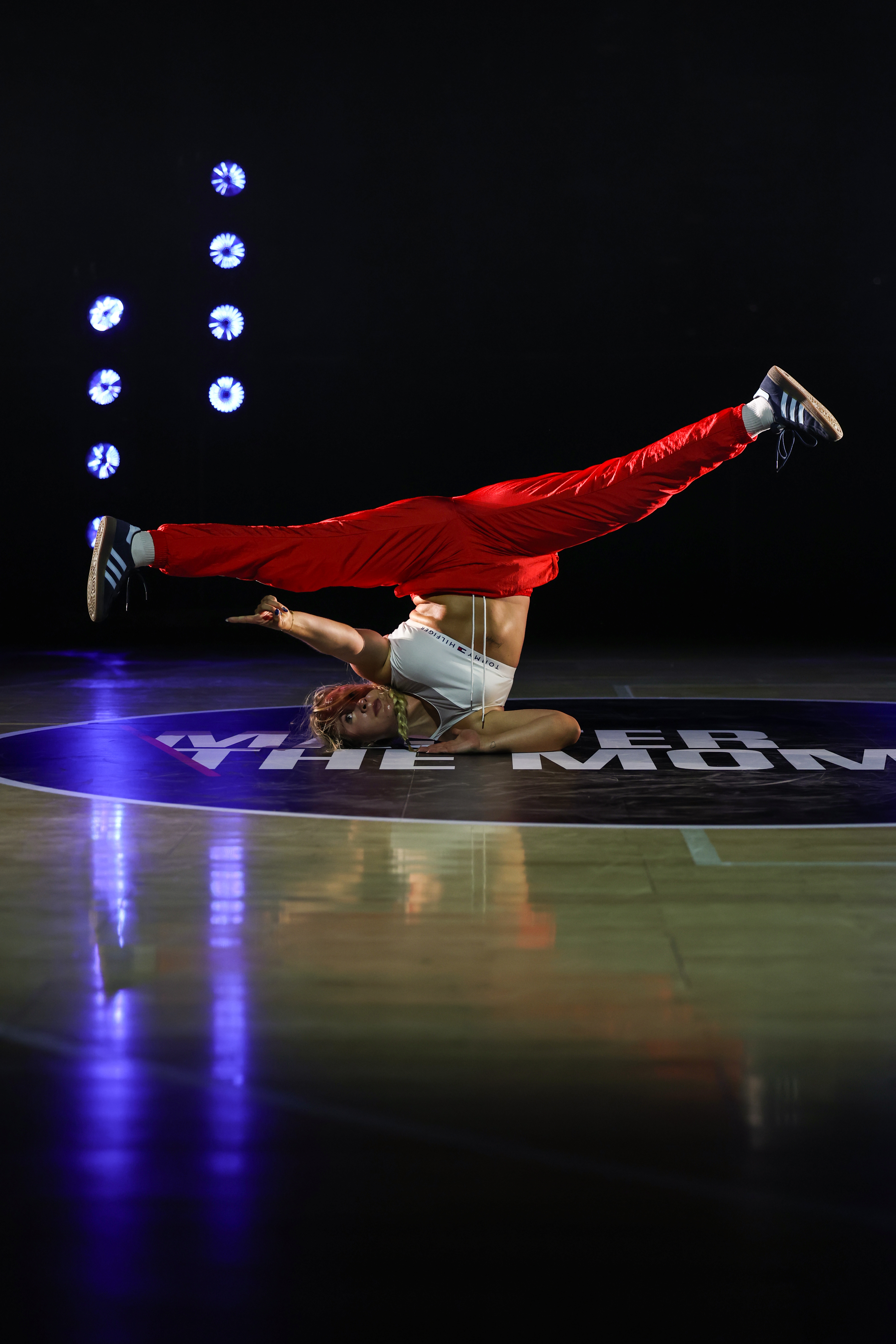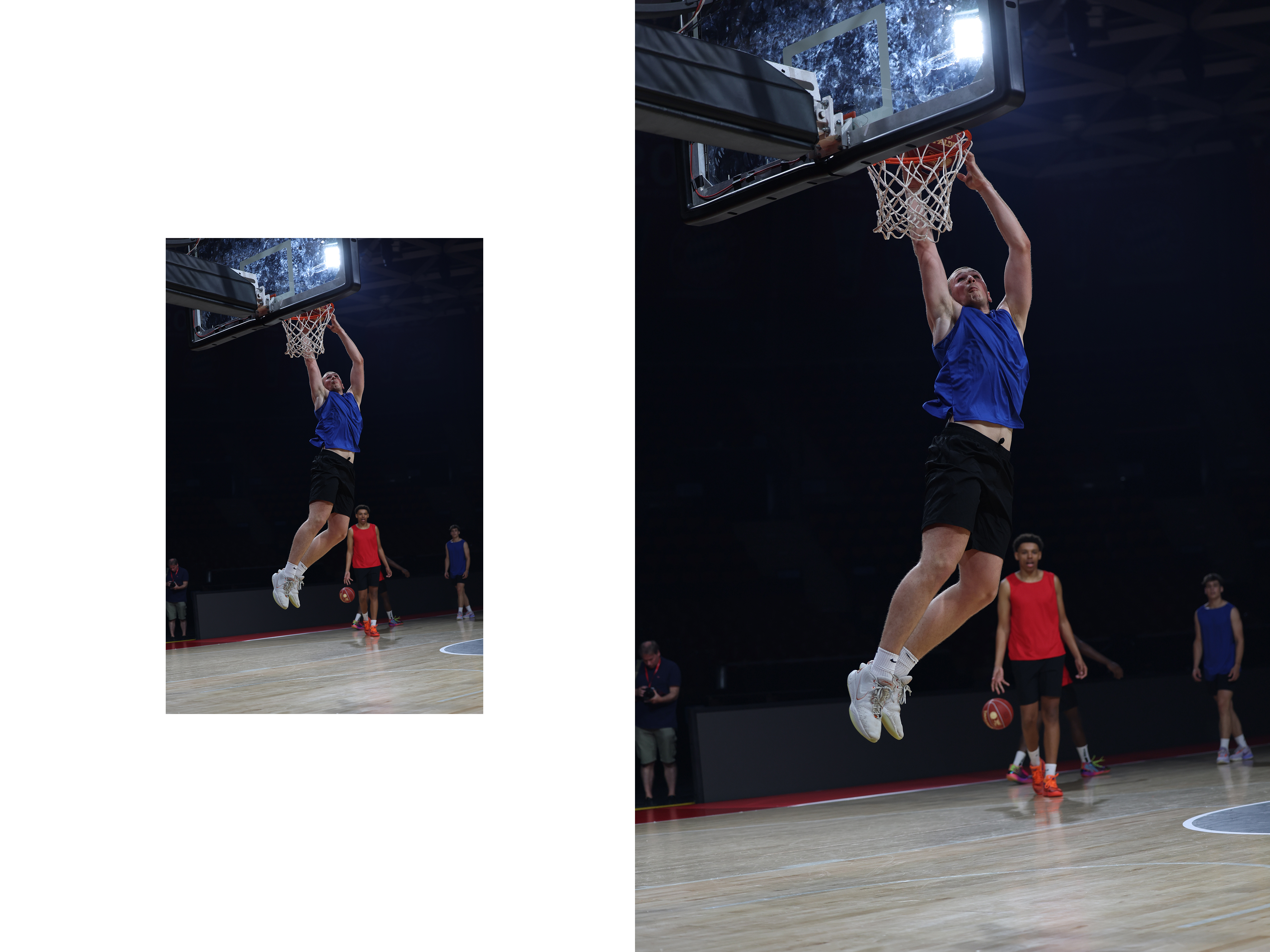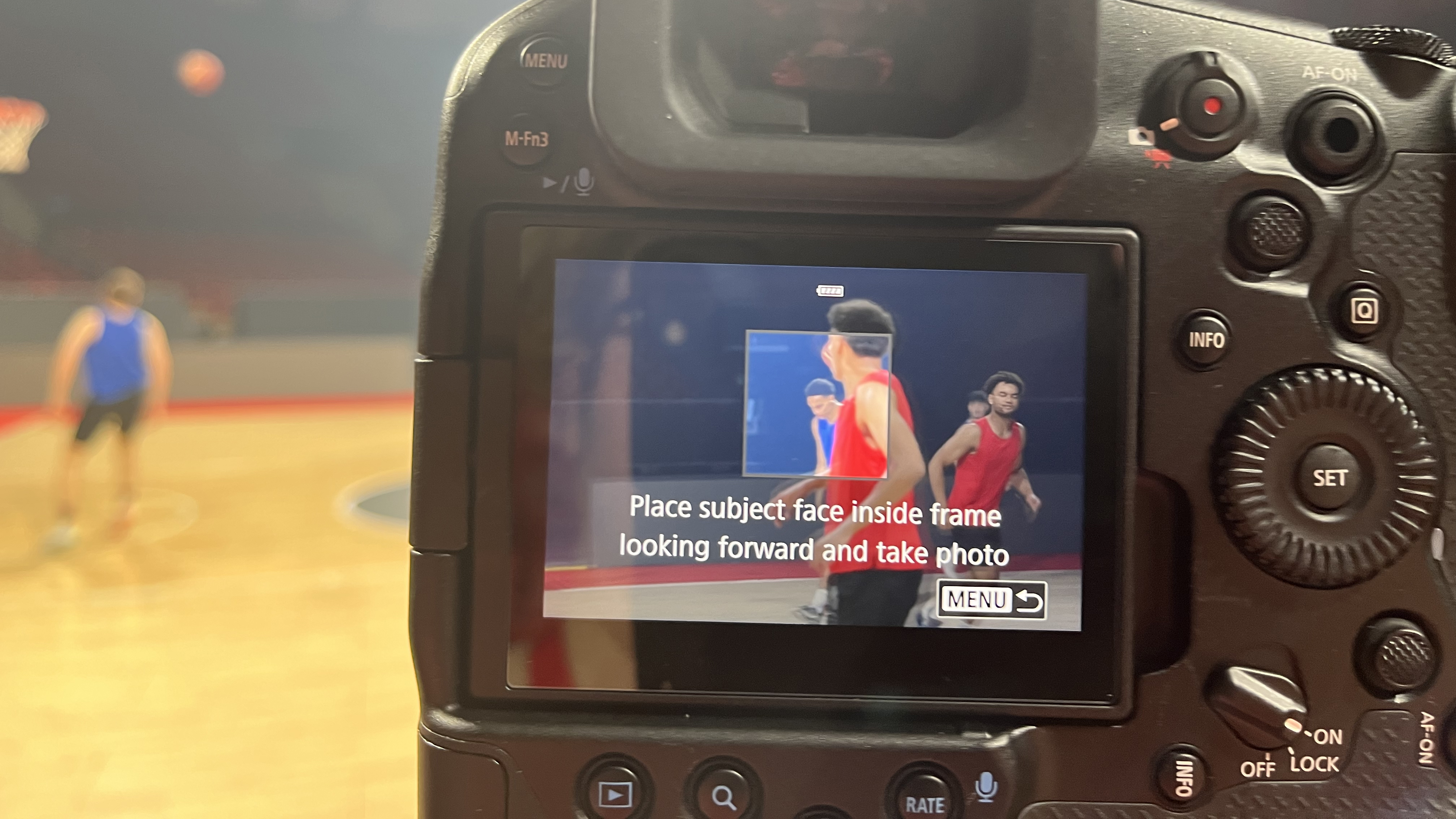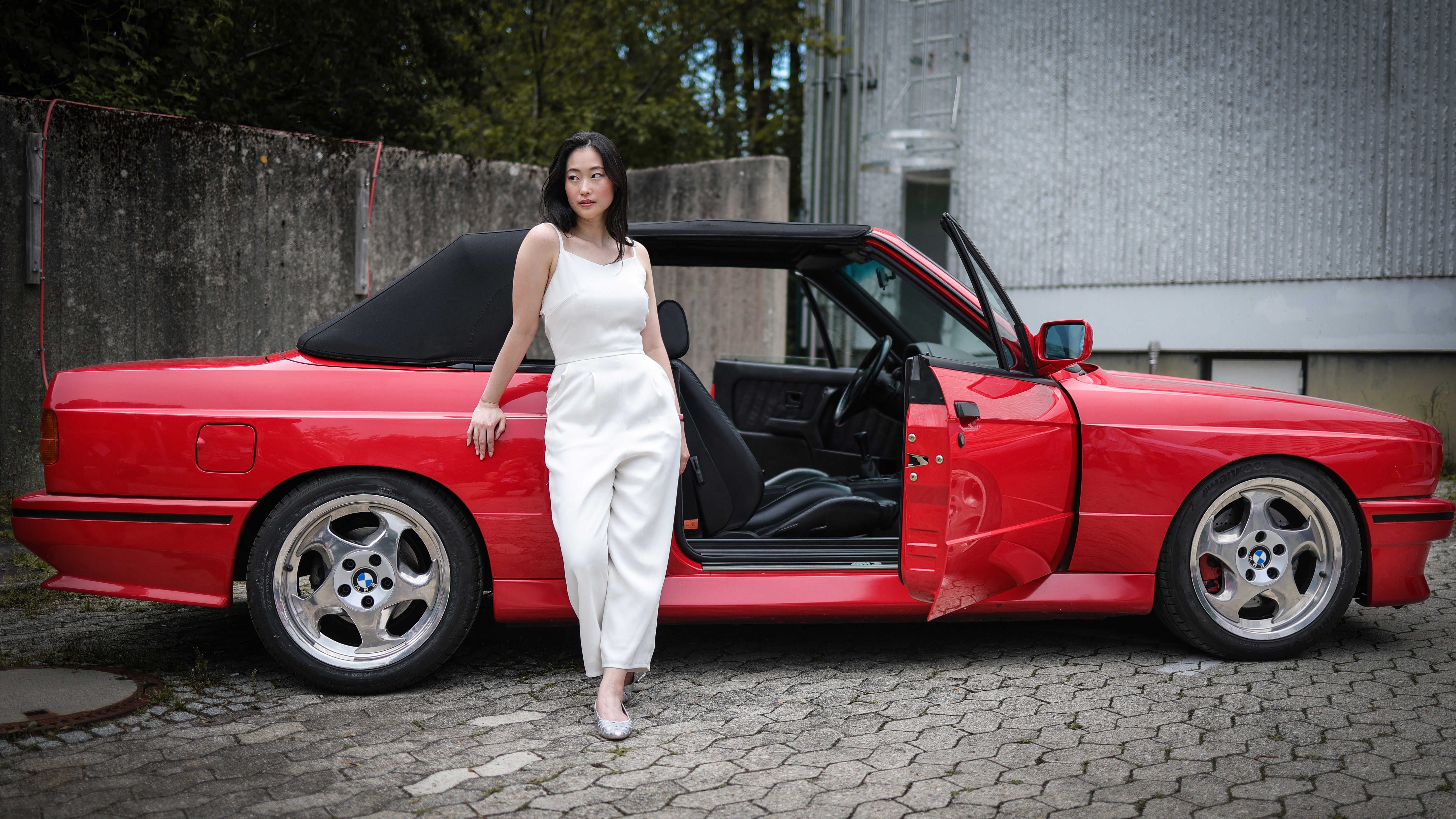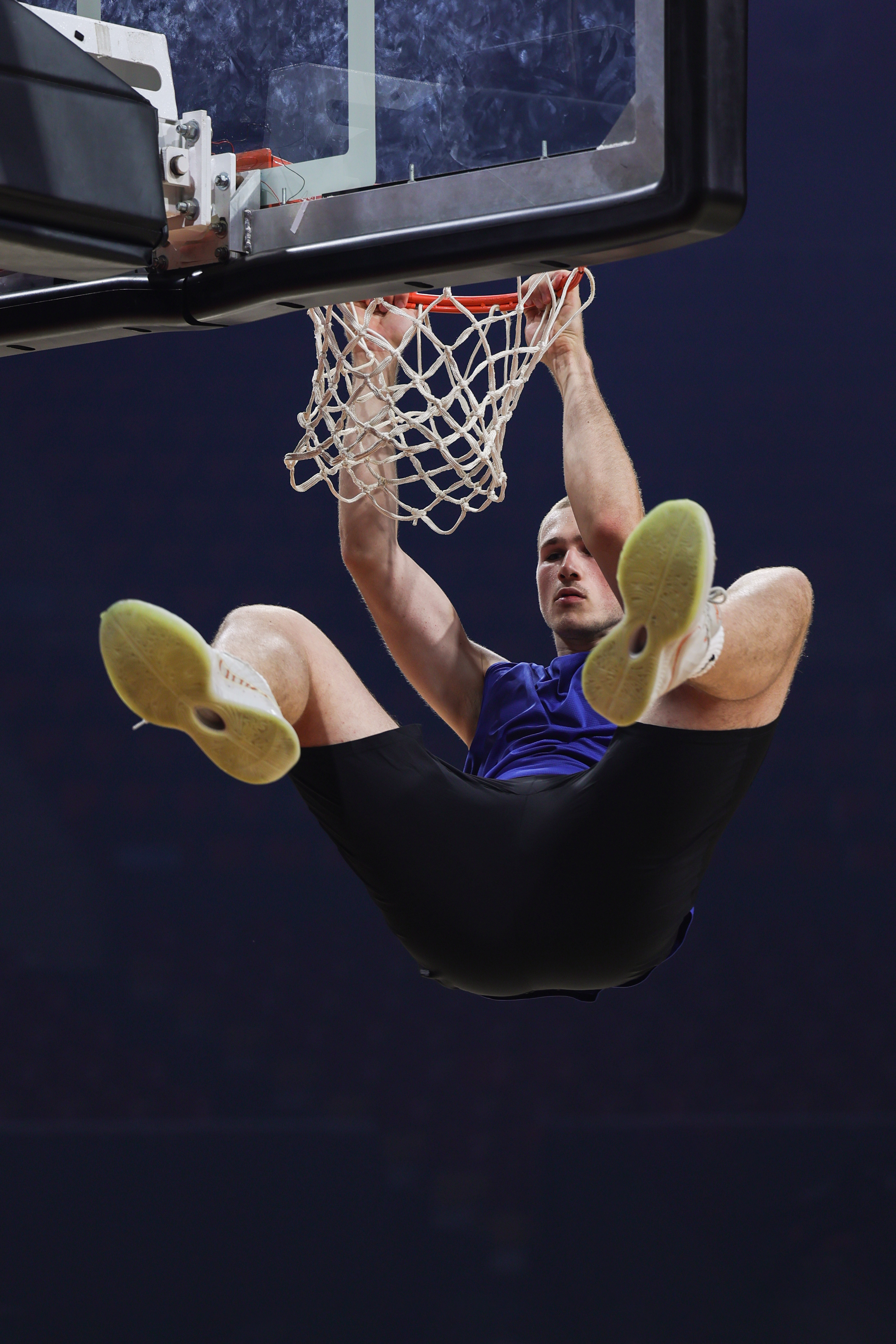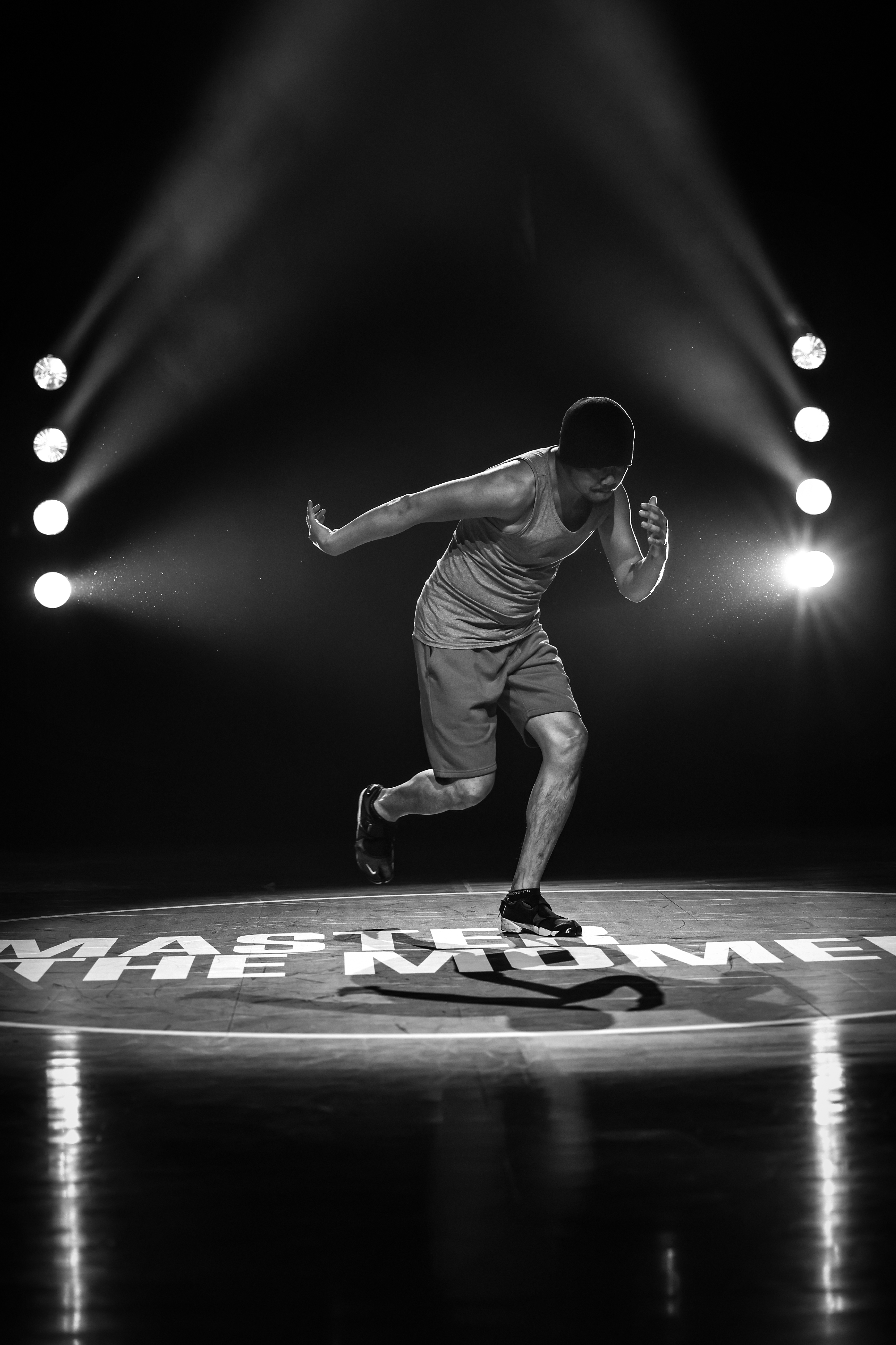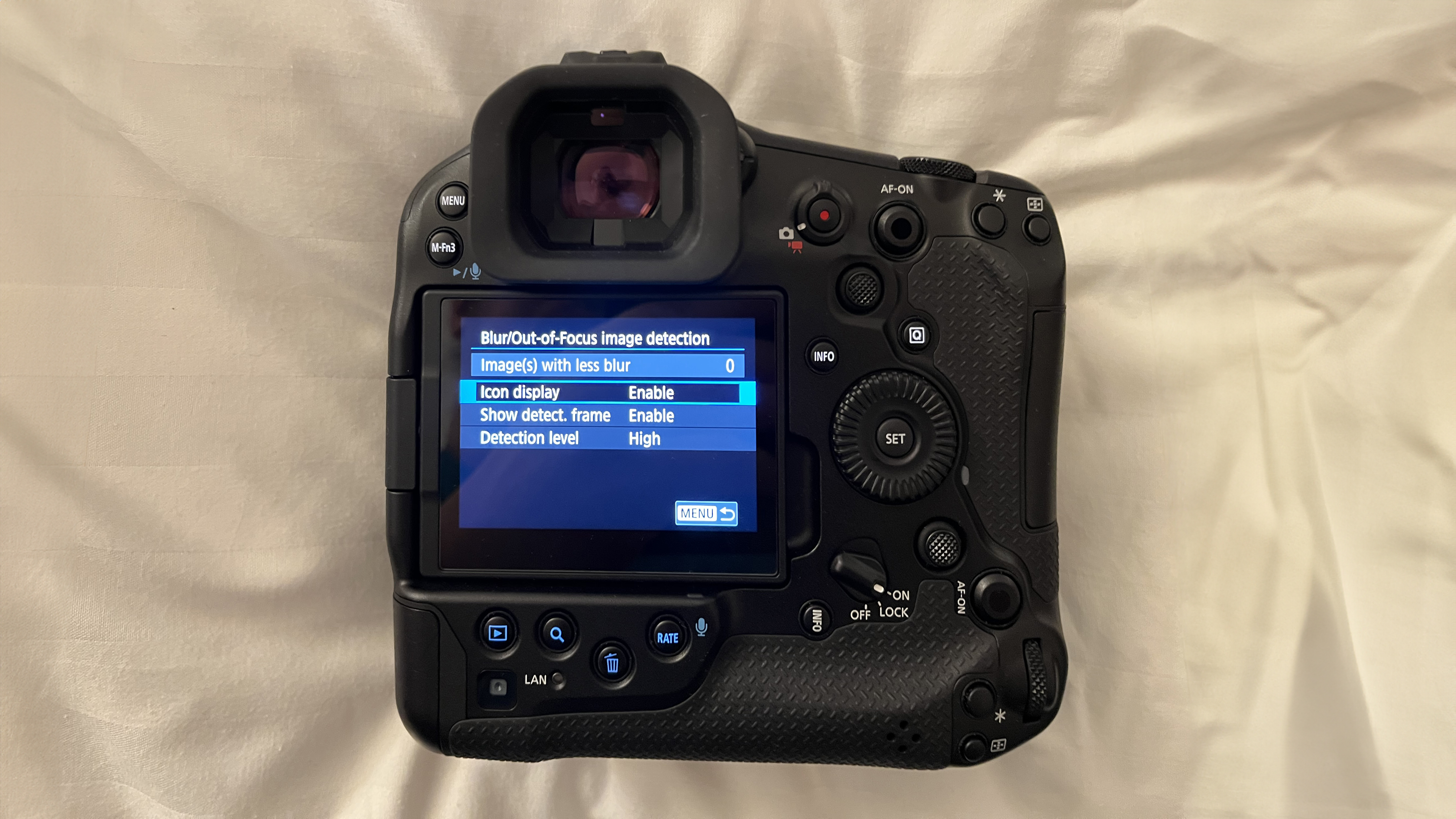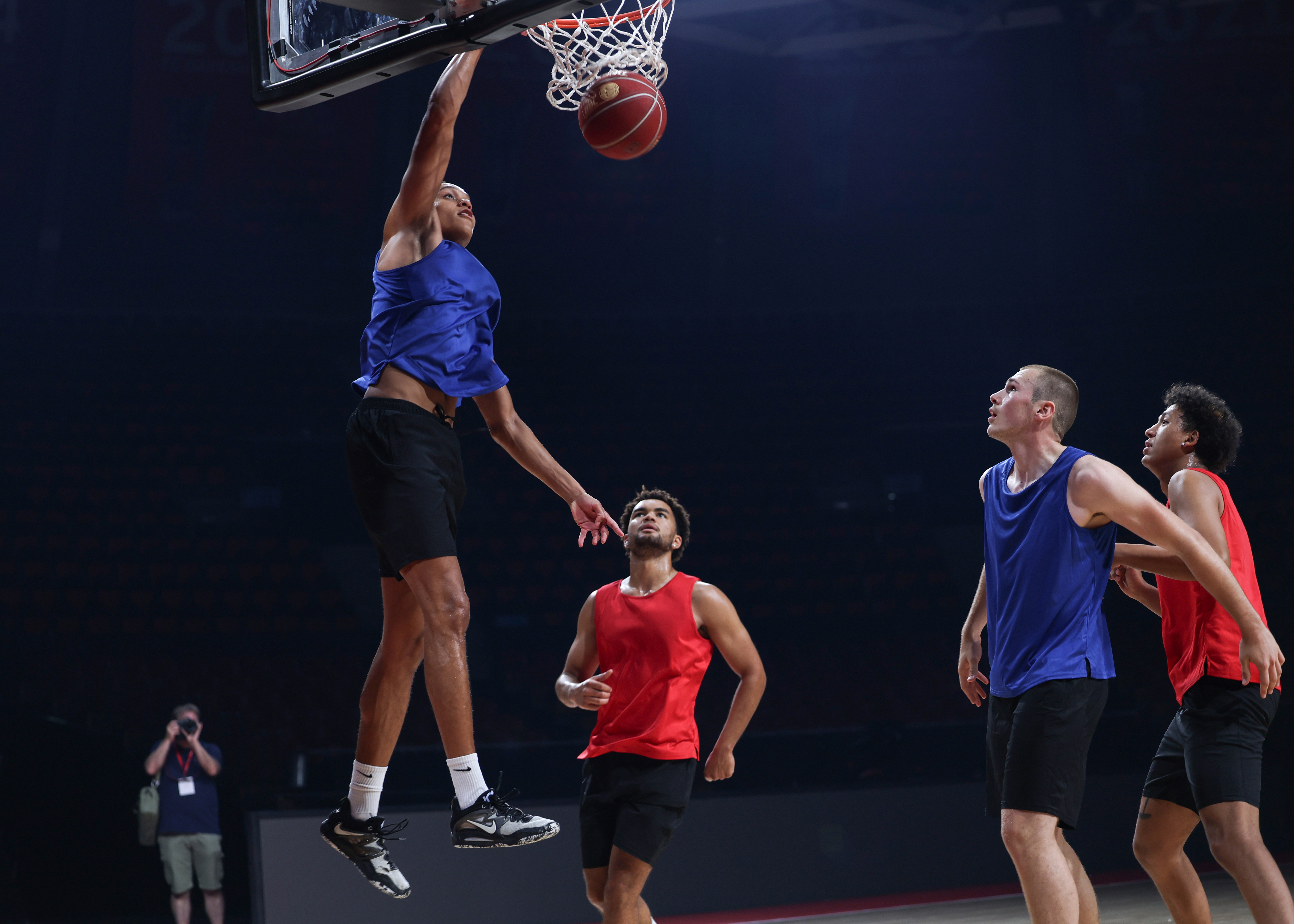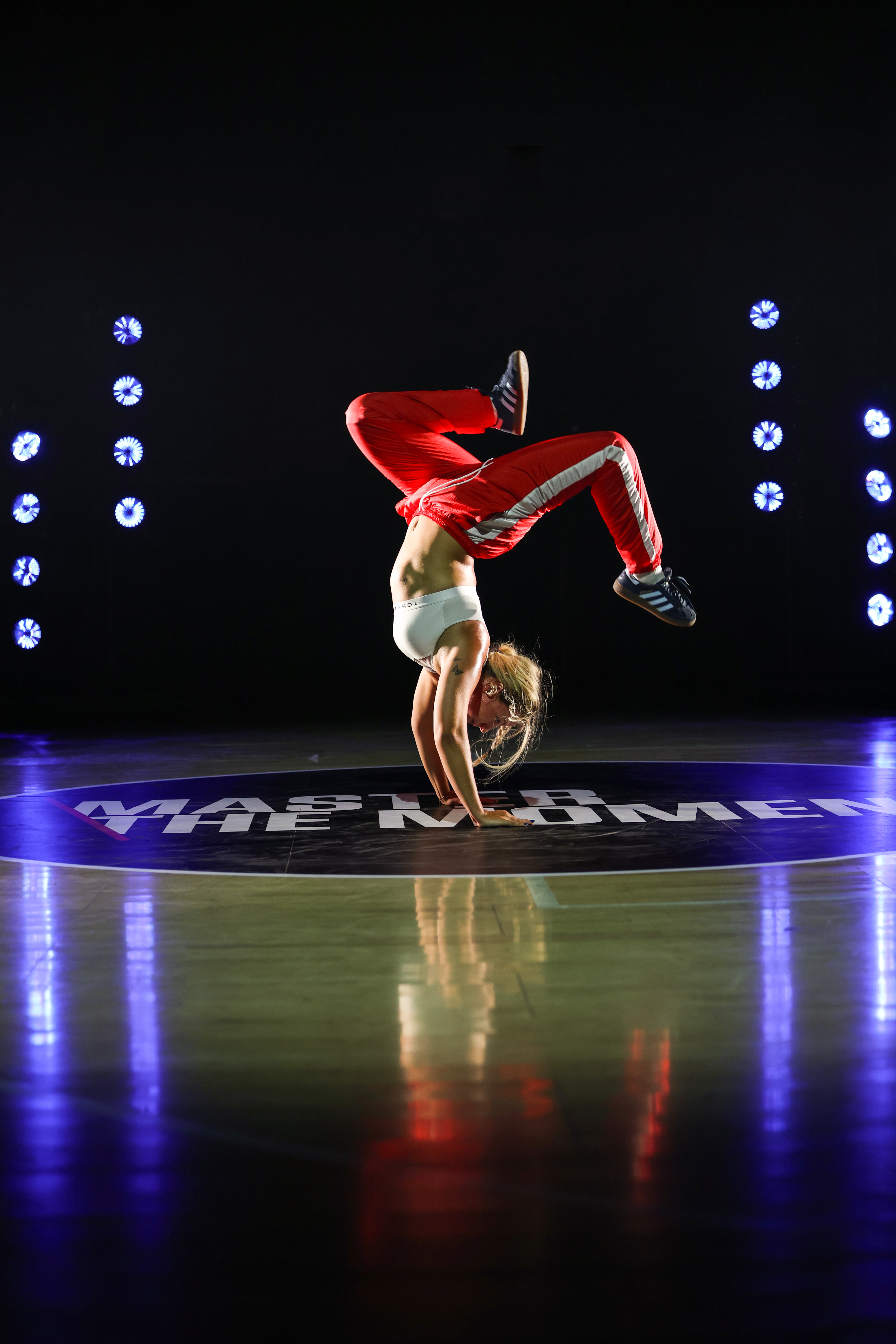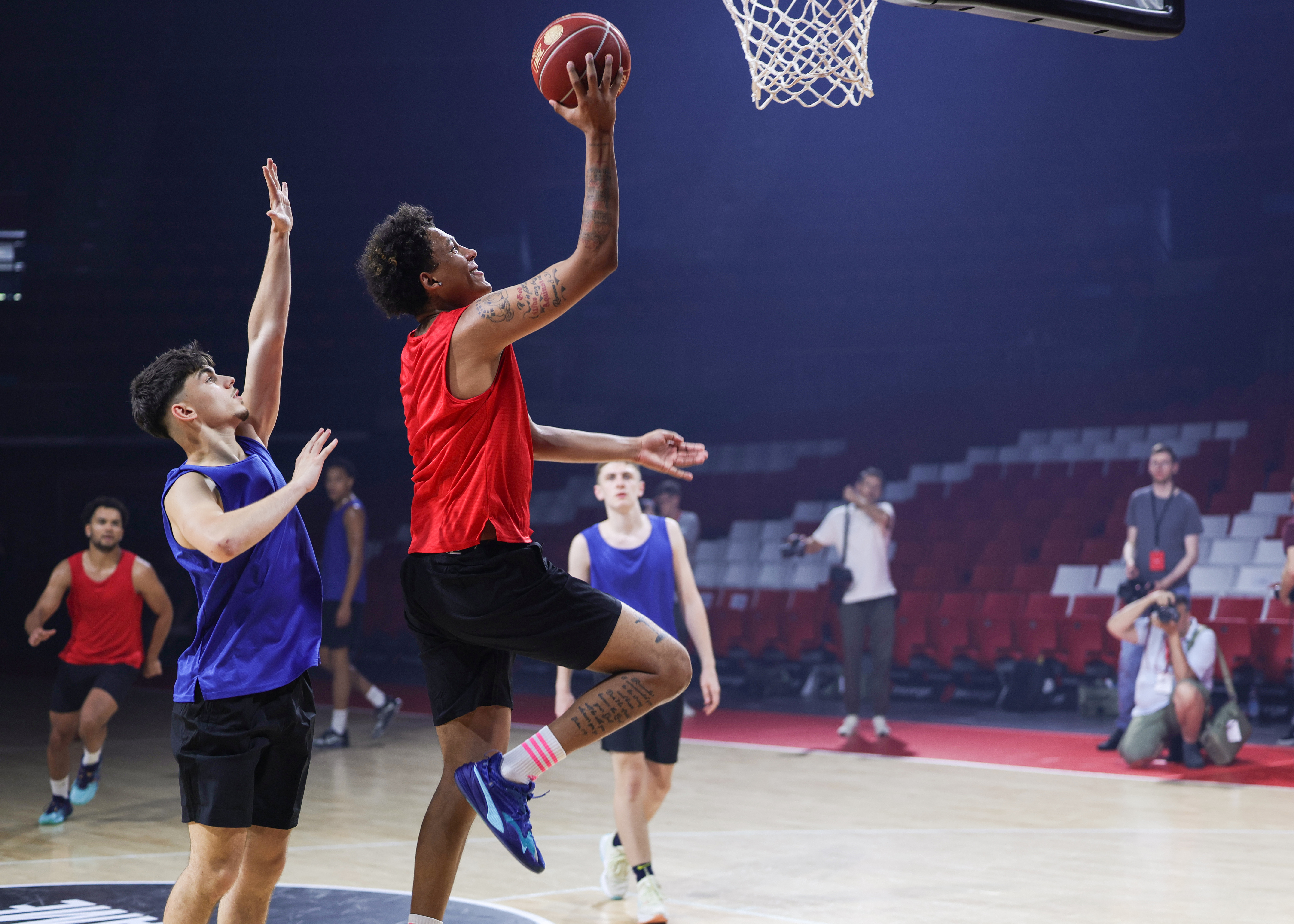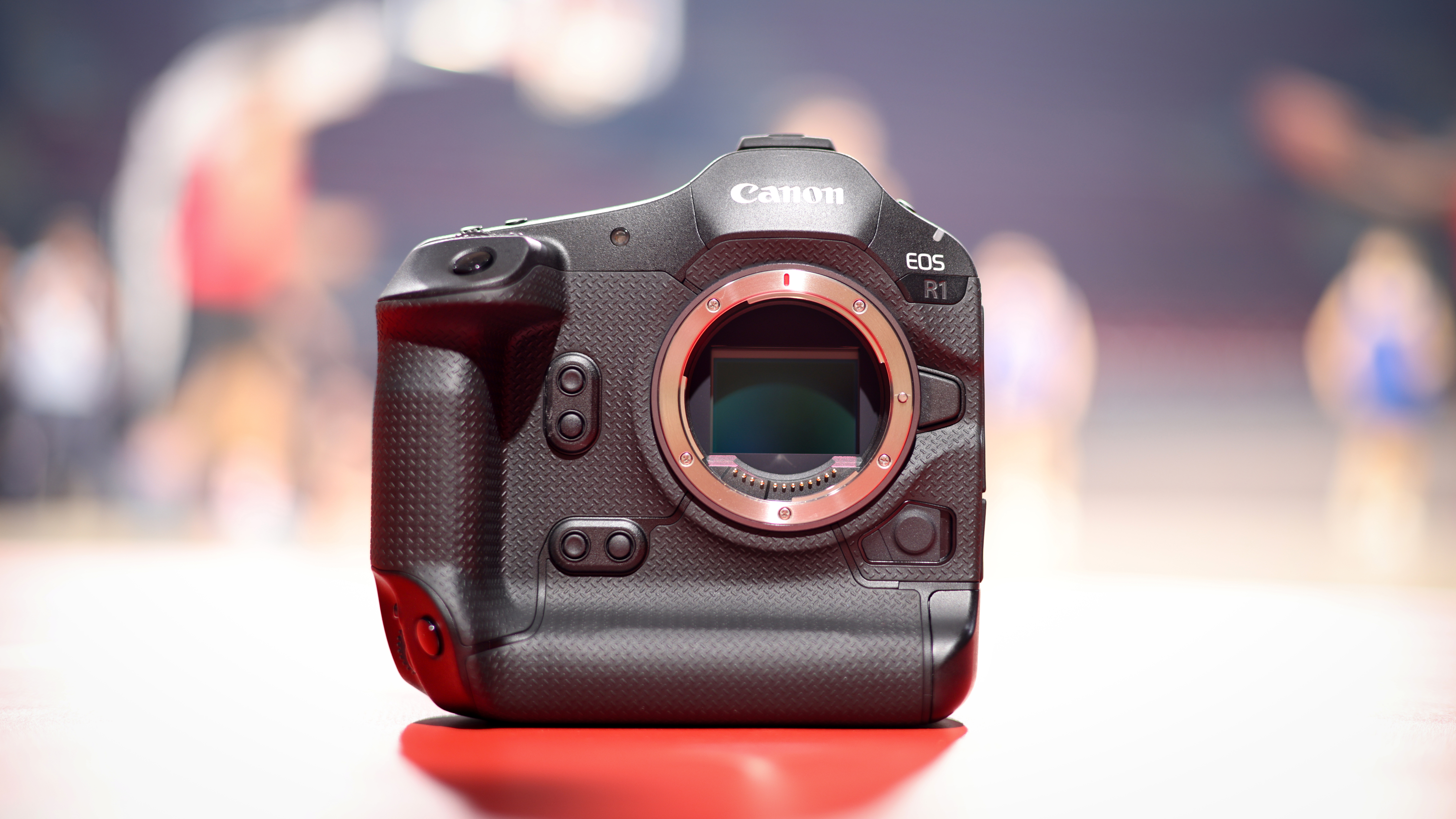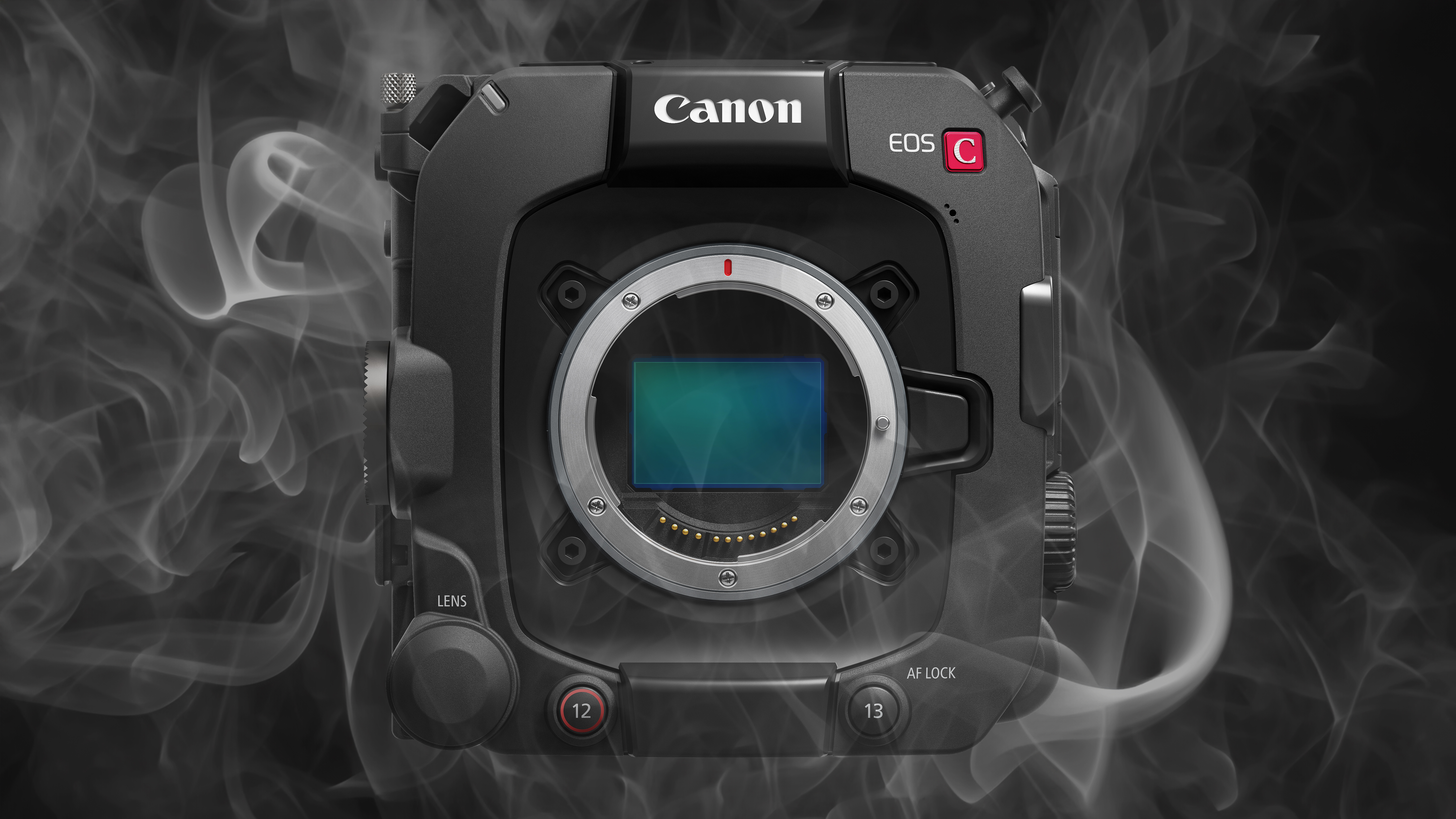Digital Camera World Verdict
Unless something goes wrong in our lab testing, the Canon EOS R1 is the best sports camera I've ever used. Not only does it hit the sports sweet spot of 24MP, it enables you to upscale images to 96MP in-camera with no loss of quality. The new autofocus algorithms, predictive tracking and priority face detection conspire to produce the most robust AF system I've ever used, and video is a dream with features such as 6K 60p RAW and C-Log2. Pros know that coming first is about more than just speed, you also need smarts – and the EOS R1 has both by the bucketload.
Pros
- +
96MP in-camera upscaling
- +
40fps burst shooting
- +
Predictive AF tracking
- +
6K 60p with Canon-Log 2
Cons
- -
Only upscales JPEG/HEIF
- -
Slight banding issue?
- -
Blurry image detect, doesn't
Why you can trust Digital Camera World
The Canon EOS R1 is the camera I've been waiting for since the entire R system was launched back in 2018. What is a camera system without a flagship camera? A standard-bearer to showcase the system and provide all the trickle-down goodness for the next half-decade.
Well, I've reviewed every top-tier sports camera from every manufacturer – literally the A to Z of flagship cameras. And after countless hours, tens of thousands of photographs and endless seconds-turned-minutes of 240p video, I think I can safely say that the Canon EOS R1 is the best flagship sports camera on the market.
As you'll see, it has a whole lot of tech in common with the Canon EOS R5 Mark II – so much so, in fact, that the two cameras are essentially siblings – but the R1 has plenty of USPs that make it the obvious and indispensable choice for professional shooters.
Canon EOS R1: Specifications
Sensor | 24.2MP back-side illuminated full frame stacked CMOS sensor | Row 0 - Cell 2 |
Lens mount | Canon RF | Row 1 - Cell 2 |
Autofocus | Dual Pixel Intelligent AF cross-type, 4368 AF points stills / 3354 AF points movies | Row 2 - Cell 2 |
Image stabilization | 8.5 stops center, 7.5 stops corners | Row 3 - Cell 2 |
ISO range | 100 to 102,400 (exp 50 to 409,600) | Row 4 - Cell 2 |
Video | 6K 60p, 4K 120p, 2K 240p, FullHD 240p | Row 5 - Cell 2 |
Viewfinder | 0.64-inch OLED, 9.44 million dots, 120 / 60fps, 0.9x / 0.8x / 0.7x magnification, Eye Control AF | Row 6 - Cell 2 |
LCD | 3.2-inch TFT, 2.1 million dots | Row 7 - Cell 2 |
Memory | 2x CFexpress Type B (up to 2TB) | Row 8 - Cell 2 |
Max burst | 40fps electronic (500 JPEG or 230 RAW), 12 fps mechanical (1,000+ JPEG or 1,000+ RAW) | Row 9 - Cell 2 |
Connectivity | Wi-Fi (6G / 5G / 2.4G), Bluetooth, USB-C, HDMI, ethernet, microphone, headphone, N3 remote terminal, PC Sync output, GPS, Multi-function Shoe | Row 10 - Cell 2 |
Size | 157.6 x 149.5 x 87.3mm | Row 11 - Cell 2 |
Weight | 920g body only / 1115g with card and battery | Row 12 - Cell 2 |
Canon EOS R1: Key features
The Neural network Image Processing features in this camera are arguably even more important here than they are in the R5 Mark II. A combination of deep learning and algorithmic AI is used to power In-Camera Upscaling, which transforms the pedestrian-resolution 24.2MP images into pixel-packed 96MP photos – immediately outclassing every full-frame camera on the market, and effectively hitting GFX and Hasselblad territory.
On top of that is High ISO Noise Reduction, which uses AI to denoise images by 2 stops. It works wonders when you're pushing those higher ISOs, which are already way cleaner than you'd expect thanks to the flagship image sensor and modest pixel count.
It's easy to dismiss these features as a gimmick, but trust me: they're not. All of a sudden, your 24MP sports camera packs all the resolution of a massive medium format sensor with raised ISO ceilings to boot. Check out my article to see why I belive these in-camera AI features are going to change everything – I go over the process involved in converting your files and throw in some sample images so you can see what real-world results look like.
I didn't think that Dual Pixel CMOS AF could get any better, but Canon has upped the ante by adding a dedicated Digic Accelerator processor that fires in tandem with its newest Digic X image processor. The result is Dual Pixel Intelligent AF, the levelled-up evolution of Dual Pixel that can make AF and tracking computations at up to 60fps when you use the electronic shutter.
The best camera deals, reviews, product advice, and unmissable photography news, direct to your inbox!
This makes all manner of magic possible, including the new Action Priority mode. for sports with a circular ball (the camera is pre-programmed with modes for basketball, soccer and volleyball). This mode has been schooled with deep learning AF to recognize, detect and track the body mechanics of players when a ball is in the frame.
This means that it can recognize when a soccer player jumps to receive a header, and calculate where the ball is likely to go next. It understands when a volleyball players leaps in the air and throws their arm back for a crosscourt spike. And it even knows what is happening when two basketball players connect on an alley oop in basketball.
I put this last one to the test myself, during a live three-on-three pickup game. I've included some frames from the sequence below so you can see how the camera knows to focus on the ball handler, and it doesn't get fooled when he lobs it up, over the head of the defense and above the rim, with focus following and shifting to his teammate who leaps in from out of frame to catch the ball in midair and jam it through the basket.
The clever autofocus functions don't stop there. Next up is Registered People Priority, a mode that detects faces – but trust me, this ain't your daddy's face detection AF mode!
Simply take a photo of your subject – or even take a photo of a photo on their social media profile, if they're not in front of you – and the camera will register it that person's face (in fact, it will somehow even register their profile as well). You can register up to ten faces, and the R1 will automatically focus on one of them as soon as they enter the frame.
But what happens if two, or three, or even all ten of your Registered People are in the frame? This is where the Priority comes into play. When you've registered your faces, you assign them a priority.
You can make the star player in a game the most important, and the bench warmer the least. Maybe the bride at a wedding is number one, and the rude uncle is number ten. If you want to photograph a band at a gig, you might want the camera to prioritize the lead singer over the drummer.
When the camera recognizes more than one registered face, it will focus on the one with the highest priority until they disappear or unless you tell the camera otherwise – whether it's by flicking the joystick to another person or using Action Priority to prioritize a ball game.
I put this to the test during a basketball game as well, which you can see in the image below. I had prioritized the player pictured shooting the ball, and as you can see he was being swarmed by a defender, obscured by two teammates, and a spectator repeatedly walked in front of my camera. And still, the camera knew where he was and that he had the ball, and wasn't tricked into jumping focus to anyone else.
This kind of genuine subject-tracking stickiness even with multiple moving obstacles – which many AF systems are so quick to promise – is rare as rocking horse poop. But in the EOS R1 it's made possible by the Digic Accelerator and Dual Pixel Intelligent AF cranking out all those calculations to never lose track of your target.
Shooting basketball, side-on from the hardwood, is perhaps the best possible test of a subject tracking AF system – and the Canon EOS R1 aced the test easier than Caitlin Clark in a rookie of the year contest.
Obviously we need to talk about shooting speeds. Ever since the Nikon Z9 and Sony A9 III pulled the 120fps card, expectations have been raised for Canon to keep up with the Joneses and offer the same furious frame-rate for its own flagship camera. And yet, the R1 doesn't fire 120 frames, and it doesn't have a fancy global shutter sensor.
While it has a shiny new stacked sensor – one whose readout speed is just 2ms, resulting in 40% less rolling shutter than the Canon EOS R3, and with the first cross-type AF points in any full-frame camera for superior horizontal line detection – it's nowhere near the top speed of its rivals, maxing out at 40fps. Which is, I should point out, is the same speed as the entry-level Canon EOS R8.
So, is this an admission of defeat? Hardly. Canon makes full-frame global shutter sensors – it's not like it couldn't use one if it wanted to. But instead of going faster, Canon has done the opposite and has actually gone slower. If you go mechanical then the top speed is 12fps, but with the electronic shutter you can customize the speed down from 40, 30, 20, 15, 12, 10, 7.5, 5, 3, 2 and even 1 frame per second.
Reading between the lines, Canon's message is pretty clear. Professional sports photographers don't need 120fps; it's beginners and enthusiasts who need 120fps, because they don't know what they're doing and they need all the assistance they can get. Matt Hoffman doesn't need stabilizers for his BMX, and pros don't need ridiculous frame rates.
Quite the contrary; pros are so good at what they do that even 40fps is probably overkill – all it's doing is filling their cards, cloud storage, and press agency servers with thousands more near-identical frames. What pros really need is the ability to choose less frames per second. And this is something I agree with, as does just about every camera journalist and professional I speak to.
Far more useful than additional frames after the fact are additional frames before it, which is why the EOS R1 now has a Pre-continuous shooting mode that starts capturing 20 frames when you half-press the shutter – so even if you don't fully press it until after the moment has already happened, you still get the shot even if you missed it.
The sensor also features a high-detail low-pass filter to improve resolution while reducing brightness moiré and color moiré. It achieves this with the same specialized, quad-layer, sixteen-point subsampling with Gaussian distribution that debuted on the Canon EOS-1D X Mark III (the previous flagship camera), rather than the traditional dual-layer, four-point subsampling.
Elsewhere, as expected, the R1 inherits an improved version of the Eye Control AF system from the R3. An extra-large electronic viewfinder tracks the movement of your eye with infrared LEDs and a control sensor, enabling you to move your focus point around simply by looking at your subject – then half-pressing the shutter to lock. The new system boasts double the detection frame rate and a hugely increased detection range – and even wearing glasses, I found it fantastic to use.
Crucial for professional use is the suite of connectivity options. The R1 is the first EOS camera to support Wi-Fi6E/11ax 6GHz in-body, unlocking new levels of transfer speed, along with 2.5G Base-T ethernet making it the fastest network camera on the market.
The R1 automatically switches between wired and wireless connection, for seamless transition whenever you plug or unplug the cable, and with FTP multi-thread and a default FTP button during some playback functions it's an unparalleled machine for high-speed, high-performance file transfer.
Lastly, let's talk video. The Canon EOS R1 boasts internal 6K DCI RAW up to 60p, 4K DCI and UHD up to 120p, 2K DCI and FullHD up to 240p, and 35mm / APS-C crops for 4K DCI and UHD 120p, and 2K DCI and FullHD up to 120p. And best of all, the high frame rates now capture audio as well.
A slew of Cinema EOS-friendly features are present, including ProRes RAW with Atomos devices, Canon Log 2 and 3/HLG support, LUT support, Custom Picture support, 4-channel / 24-bit audio, News ML - G2 metadata support, and a host of other goodies – including a full-size HDMI port and tally lamp.
Like the R5 Mark II, the R1 has a heat-dissipating design to draw heat away from the interior, with an aluminum sheet separating the memory card slot and CMOS sensor and engine, each of which have their own graphite sheet to dispel heat to the exterior of the body.
This, combined with the inherently better heat management due to the overall bigger body, produces pretty robust recording limits before overheating kicks in:
Resolution | Auto power-off temp: Normal | Auto power-off temp: High |
|---|---|---|
6K 60p RAW + proxy | 120 mins+ | 120 mins+ |
4K 120p Long GOP | 15 mins | 15 mins |
4K 60p Fine Long GOP (6K oversampled) | 109 mins | 109 mins |
4K 60p Normal Long GOP | 120 mins+ | 120 mins+ |
4K 30p Normal Long GOP | No restriction | No restriction |
FullHD 240p | 46 mins | 46 mins |


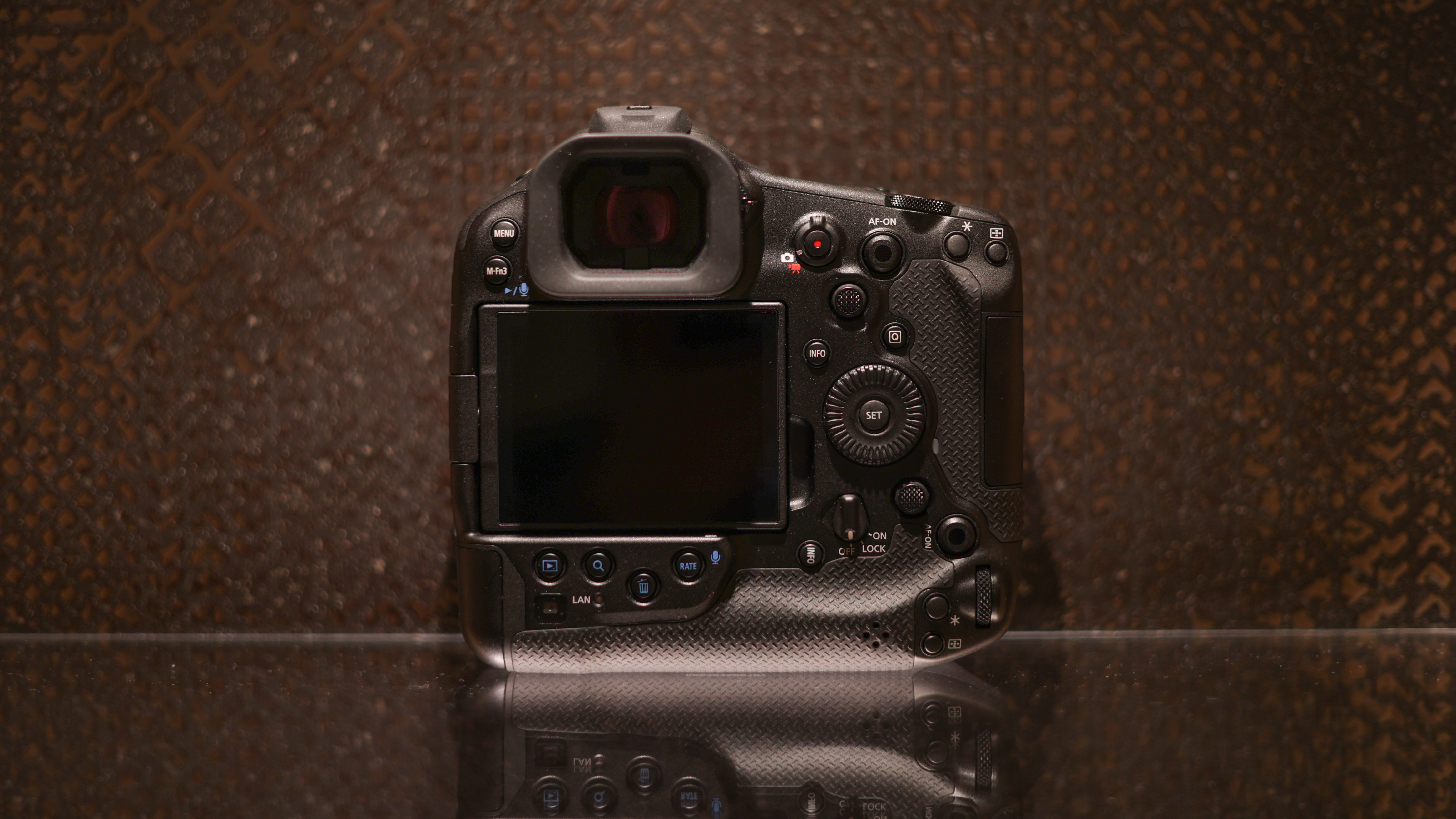
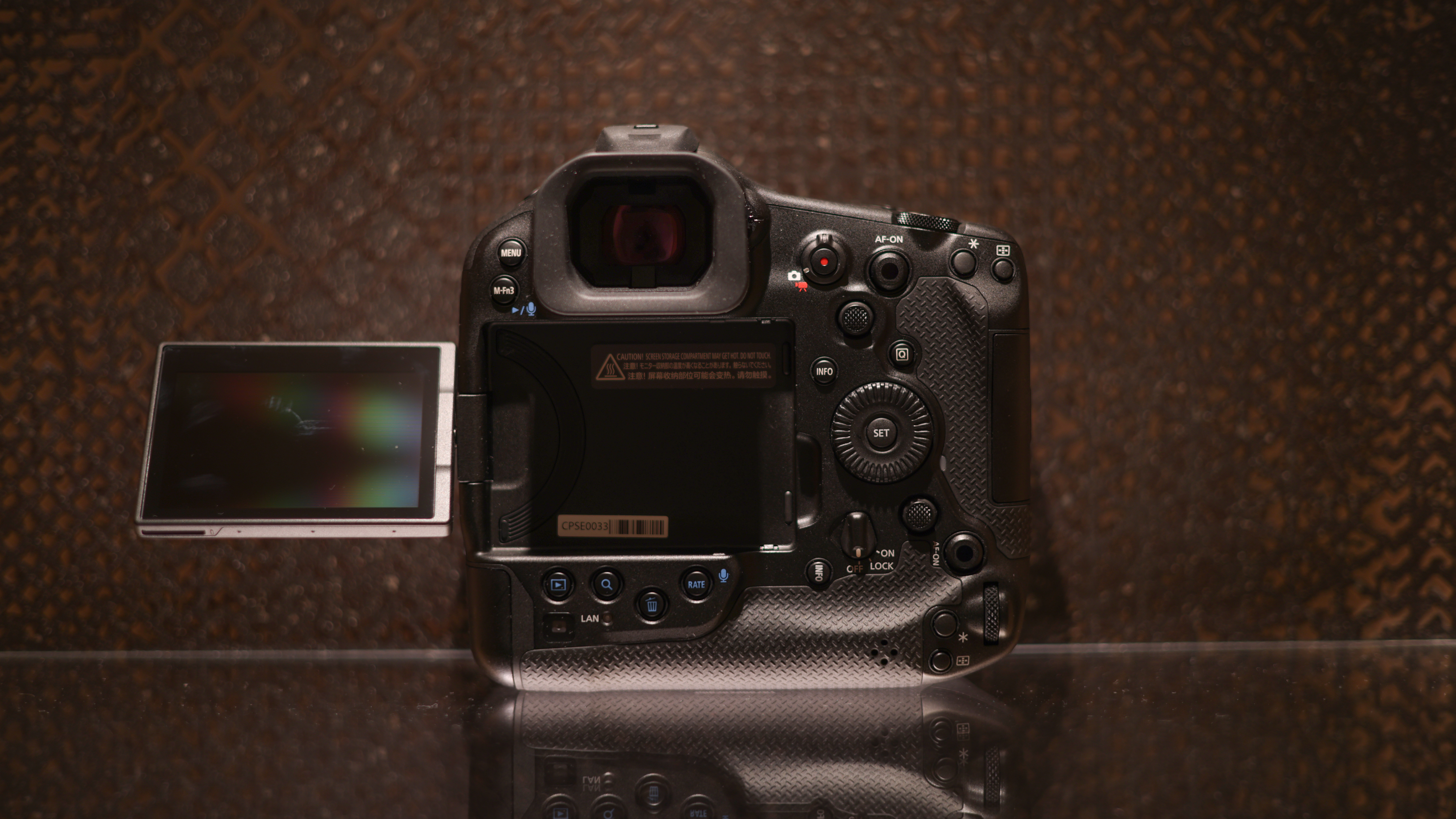

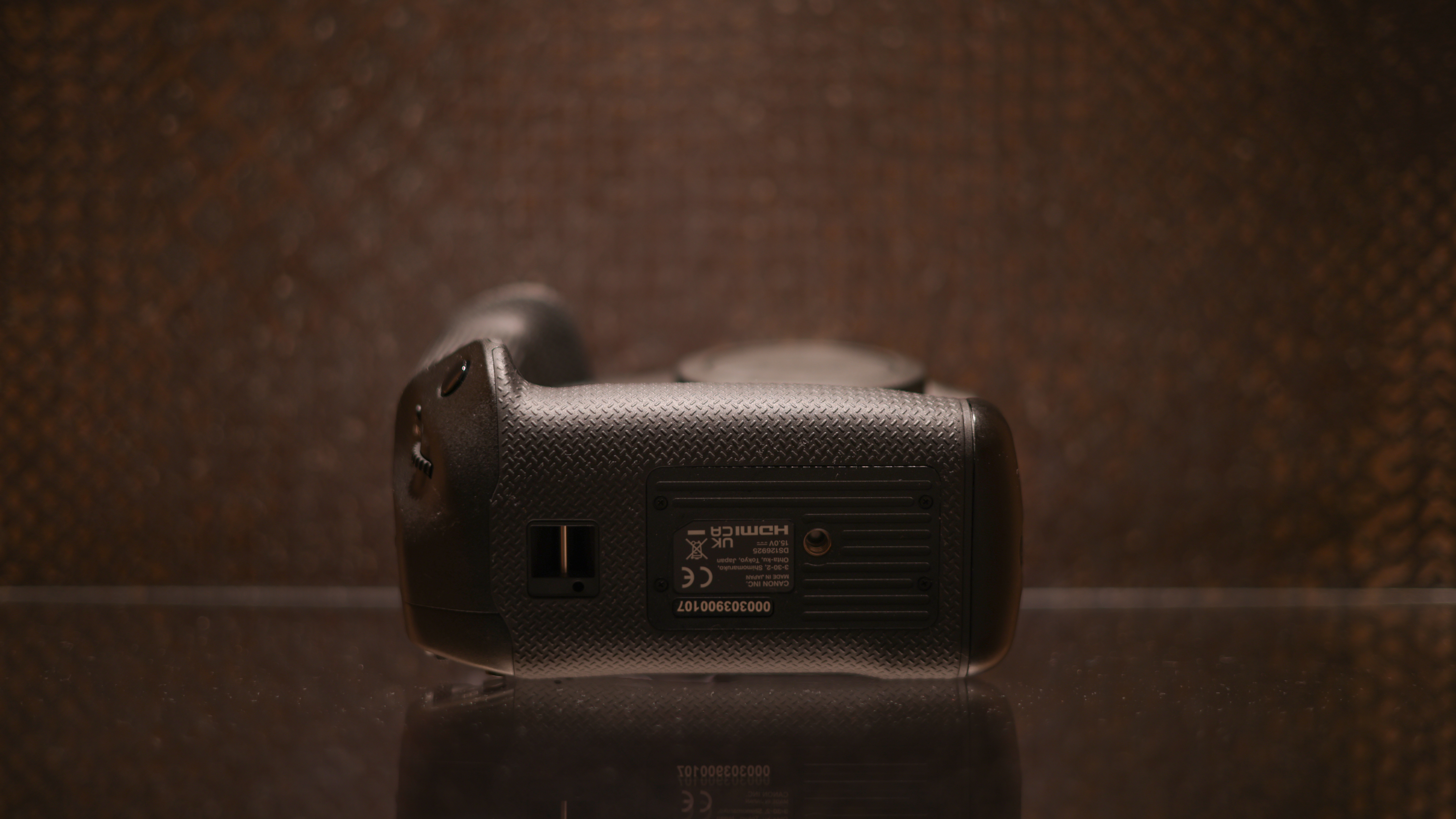
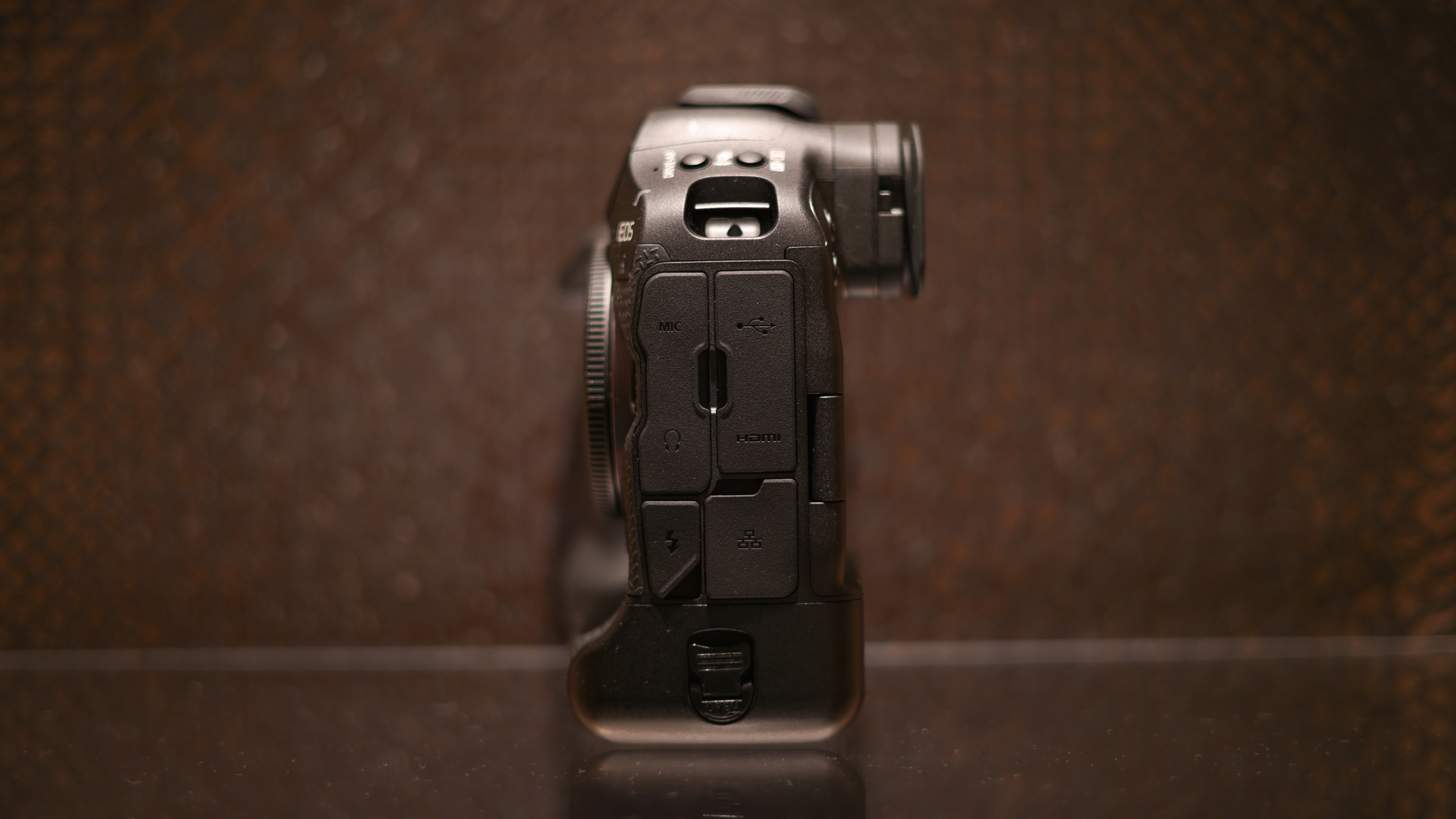
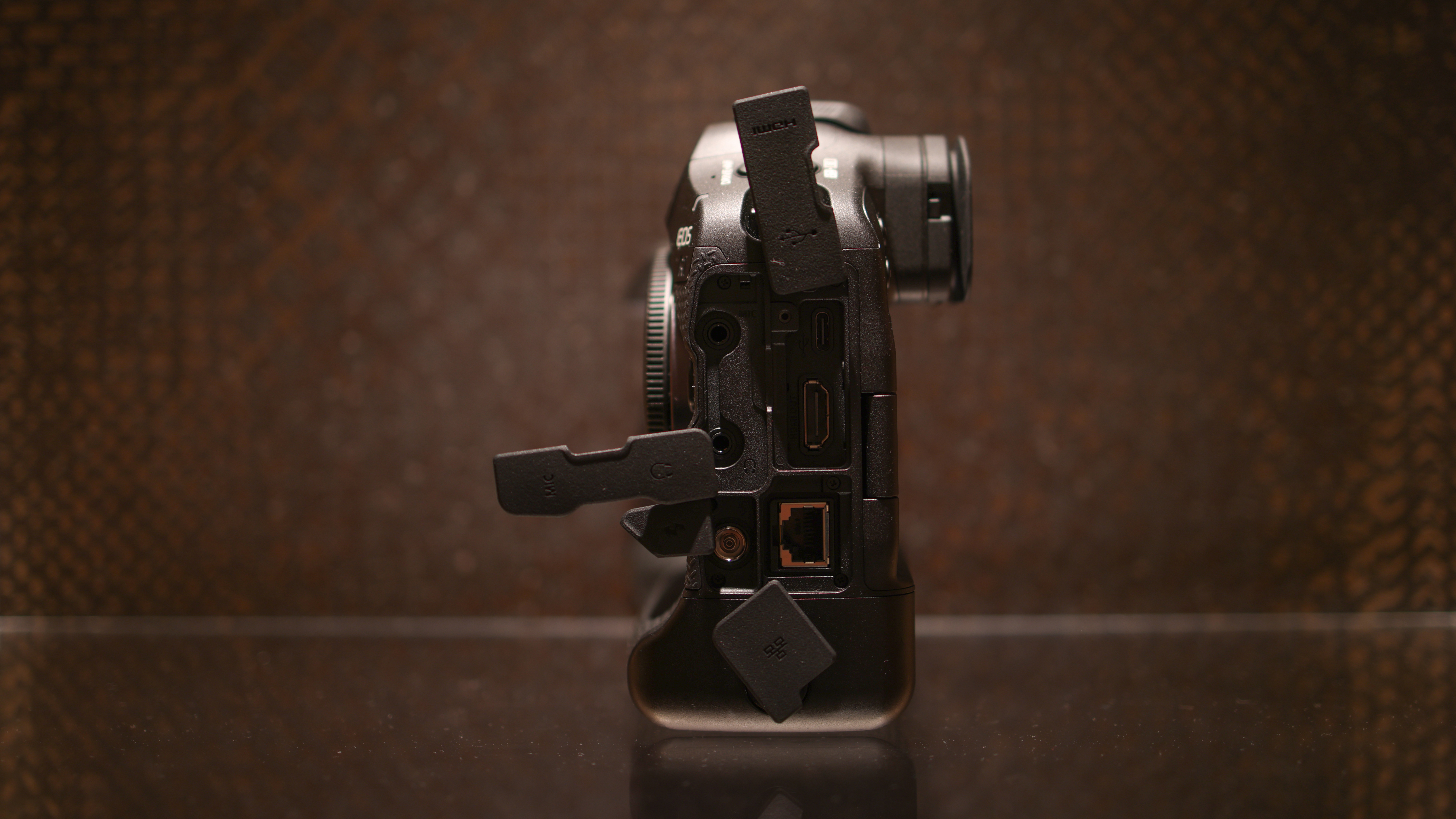
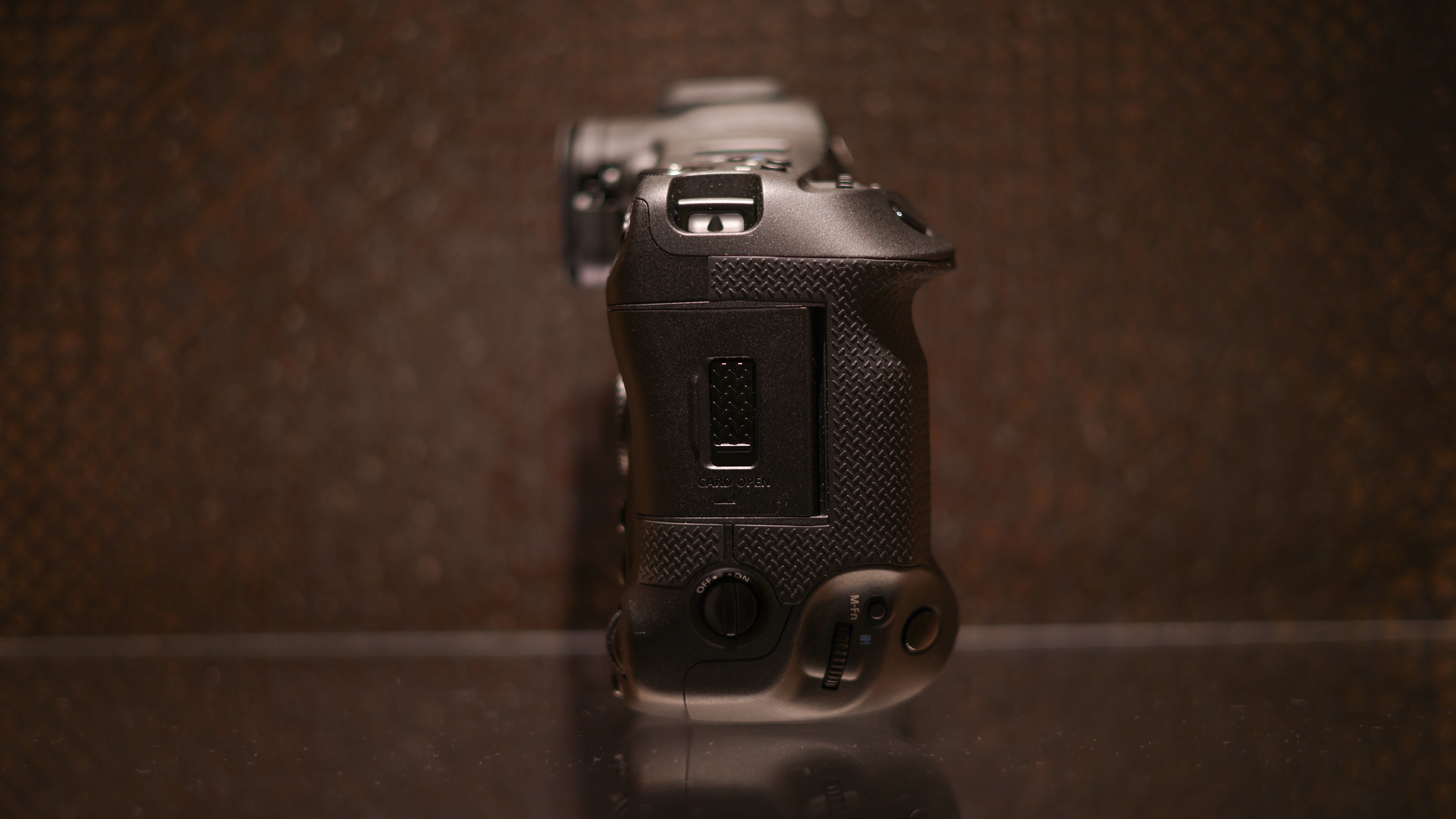
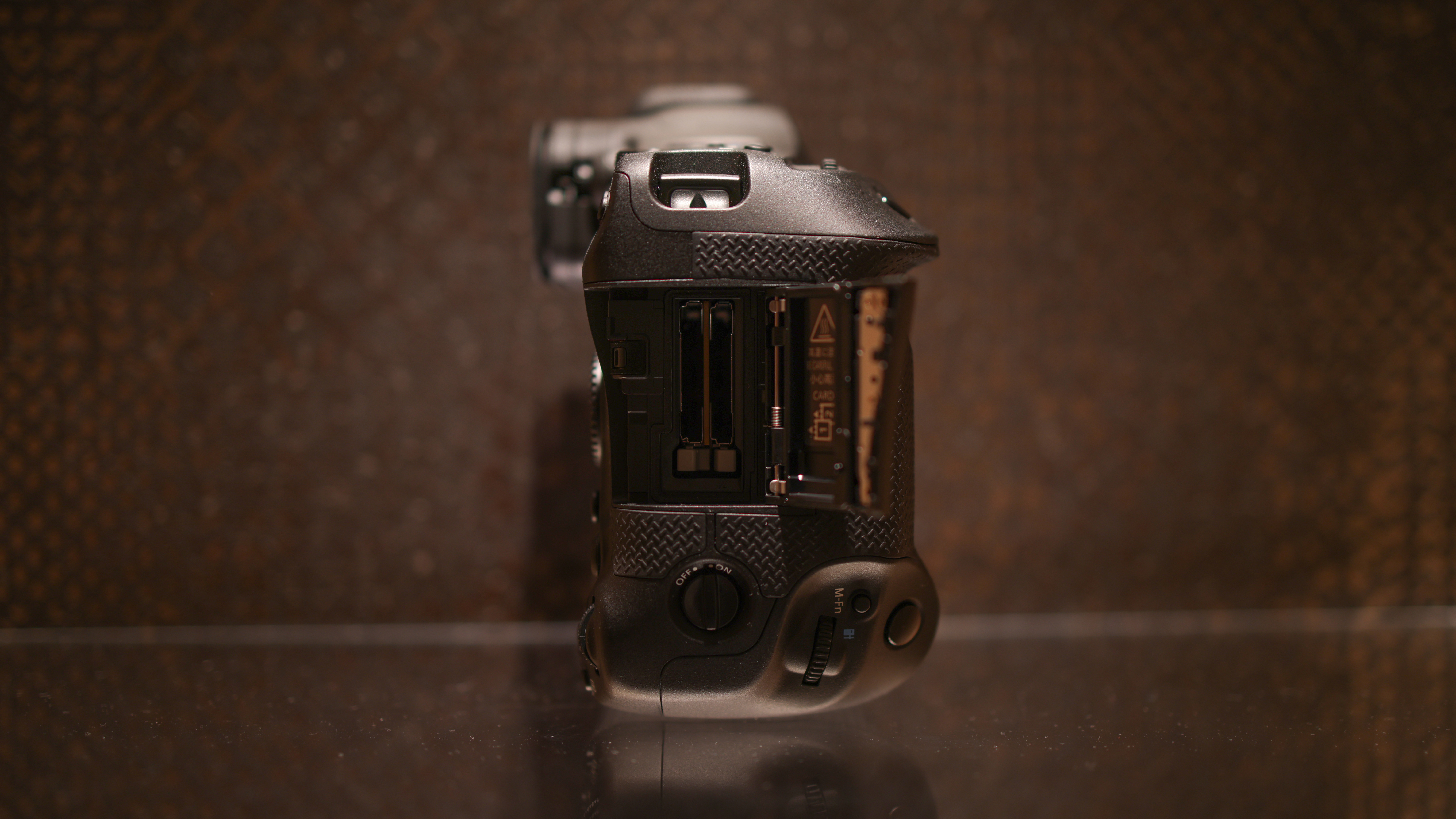
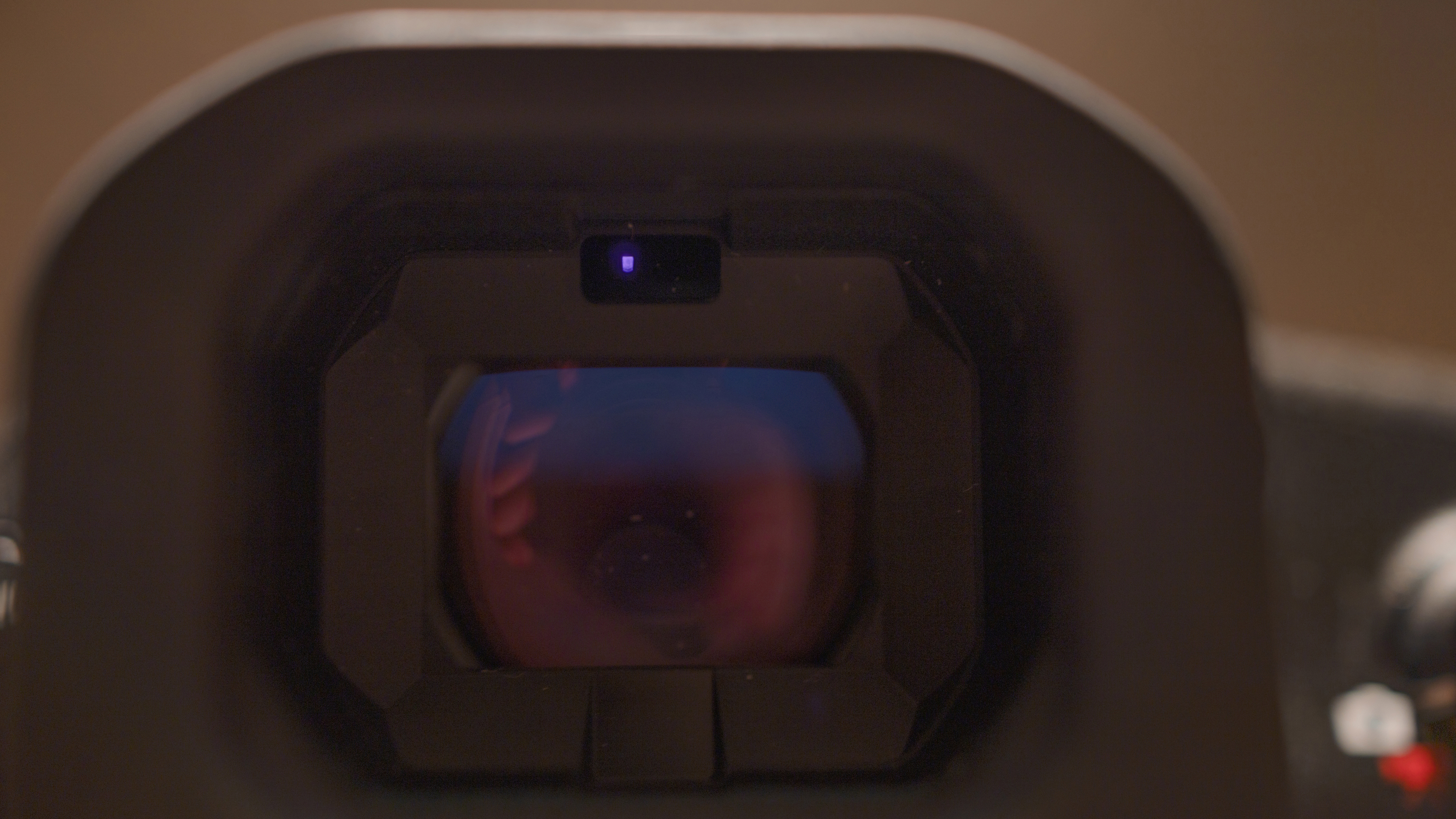
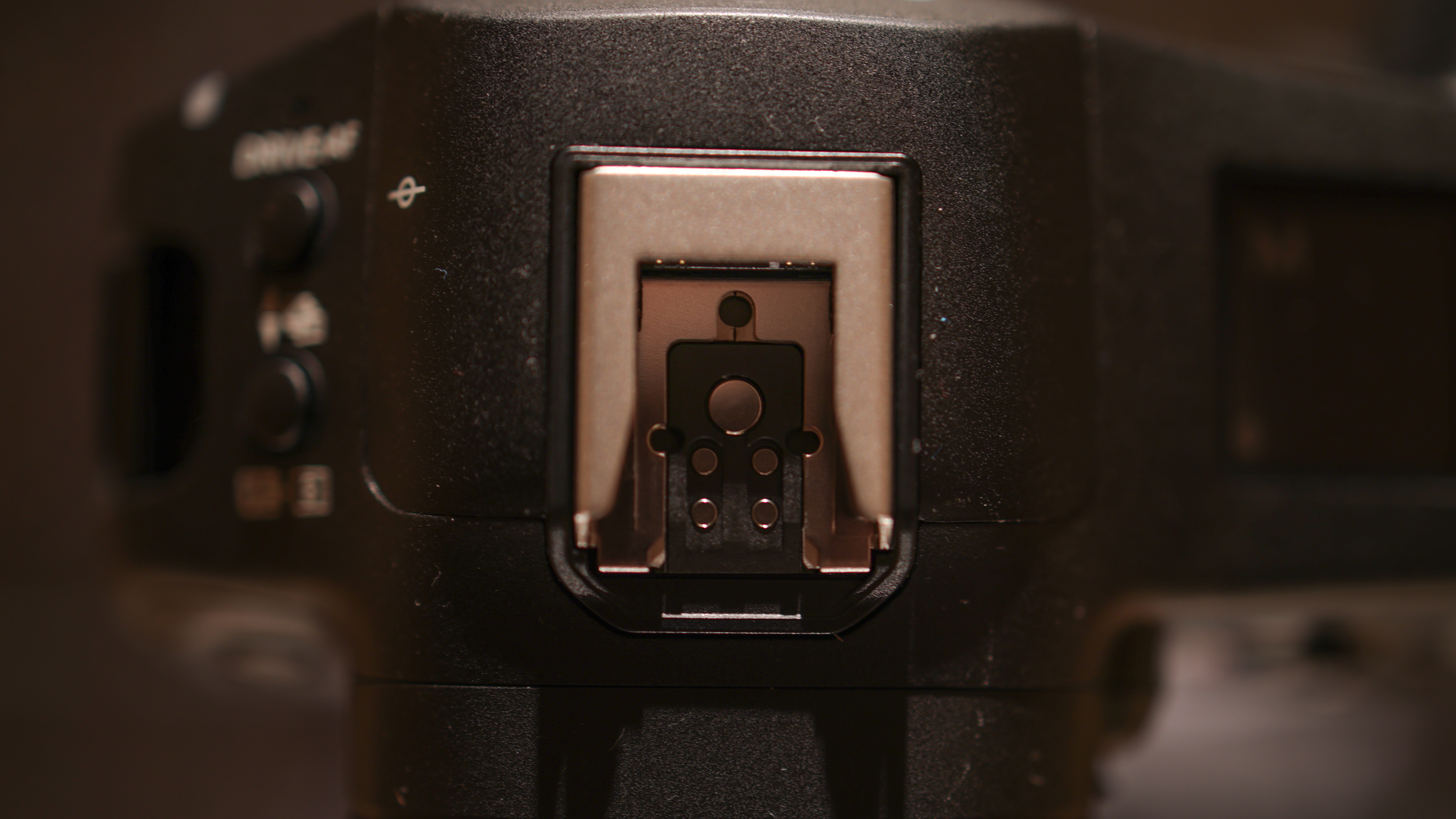
Canon EOS R1: Performance
Just as it was four years between the launch of the original Canon EOS R5 and the R5 Mark II, it was also four years since the launch of the last 1-series camera – that being the Canon EOS1-D X Mark III, back in February 2020.
I guess it doesn't feel that long because we got the EOS R3 at the end of 2021 – which was the de facto flagship in the EOS R lineup, and to many people was close enough to a 1-series camera that they were happy with it. But while R3 is a ferocious camera, it's not the R1. In no way, shape or form is it the R1. (Okay, it is a pretty similar shape, I'll grant you that.)
From the improved image stabilization and Eye Control AF to auto-network switching and the anti-fog eyepiece, the new joystick and new button layout to the remote rebooting and ProRes RAW recording, all the way through to the fact that there's no plastic in the packaging, this is a more capable camera than the R3 in every way.
I'll mention again that you should read my separate article on the in-camera upscaling and denoising, which are both unreasonably good and I truly believe they are going to reshape the way we look at resolution and ISO performance in cameras.
The R1 has just solved the classic dilemma of having the 24MP sweet spot for sports shooting while also having the flexibility to photograph in medium format resolution – do you really need a second body for hi-res imaging now?
If you hadn't guessed by my thoughts in the key features rundown, the new autofocus systems and functions are just out of this world. This camera simply didn't miss a beat when I tested it – not a single incident of focus hunting, no focus drifting onto random patterns in the background or suddenly jumping to a knee instead of a face or another subject entirely. This is as trustworthy as a personal focus puller.
I only have two minor criticisms. The first one is something I also experienced on the R5 Mark II, though it should be noted that I haven't experienced the same issue on production cameras. But I did get some minor banding issues while shooting the breakdancers, using the electronic shutter at high speed when performing their routines when lit only by pulsing FX lights.
It was hardly a major issue, and may simply be the fact that I didn't turn on anti-flicker or check that my camera frequency was synced to the right Hz. But either way, you can see the results in some of the sample dancing photos.
The other quibble may also be a case of user error, but a great feature on the R1 – and another nod to the AI-infused capabilities of the camera – is Blur / Out-of-Focus image detection. But I simply couldn't get it to detect any blurry images! Now, what I will say with absolute hand-on-heart honesty is that not a single one of the first 3,525 images on my memory card were out of focus. Which speaks to the brilliance of the AF system.
So I took three more images of my face, with a slow shutter speed and shaking my head side-to-side, to create artificially blurred shots – and still, the blur detection didn't flag them up. I'd love to see this feature tightened up (or explained to me) as anything that helps crop the non-keepers has got to be good – even if there aren't many naturally occurring ones!
Canon EOS R1: Sample images
Canon EOS R1: Lab results
For our lab data comparison we're comparing the EOS R1 to its DSLR counterpart, the EOS-1D X Mark III, to see how Canon's new flagship mirrorless offering compares to its last-ever flagship DSLR. We're also including Nikon's top-of-the-range mirrorless offering, the Z9, and Sony's latest camera for serious sports photography, the a9 III.
Resolution (line widths/picture height):
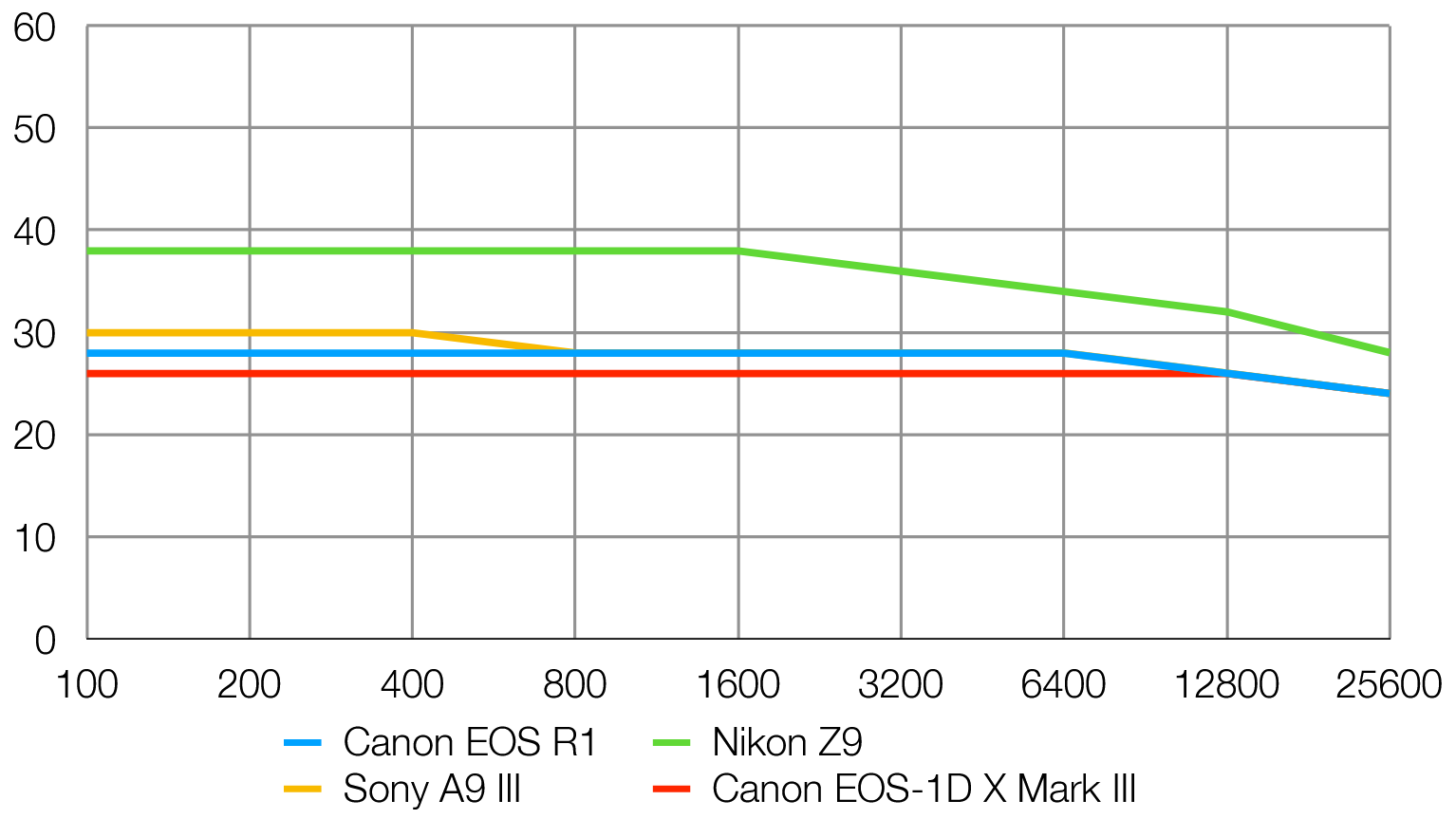
Naturally, the Z9 was always going to excel for outright detail capture, with its 45.7MP sensor easily resolving more fine detail than the 20-24MP cameras in this comparison.
Dynamic range (EV):
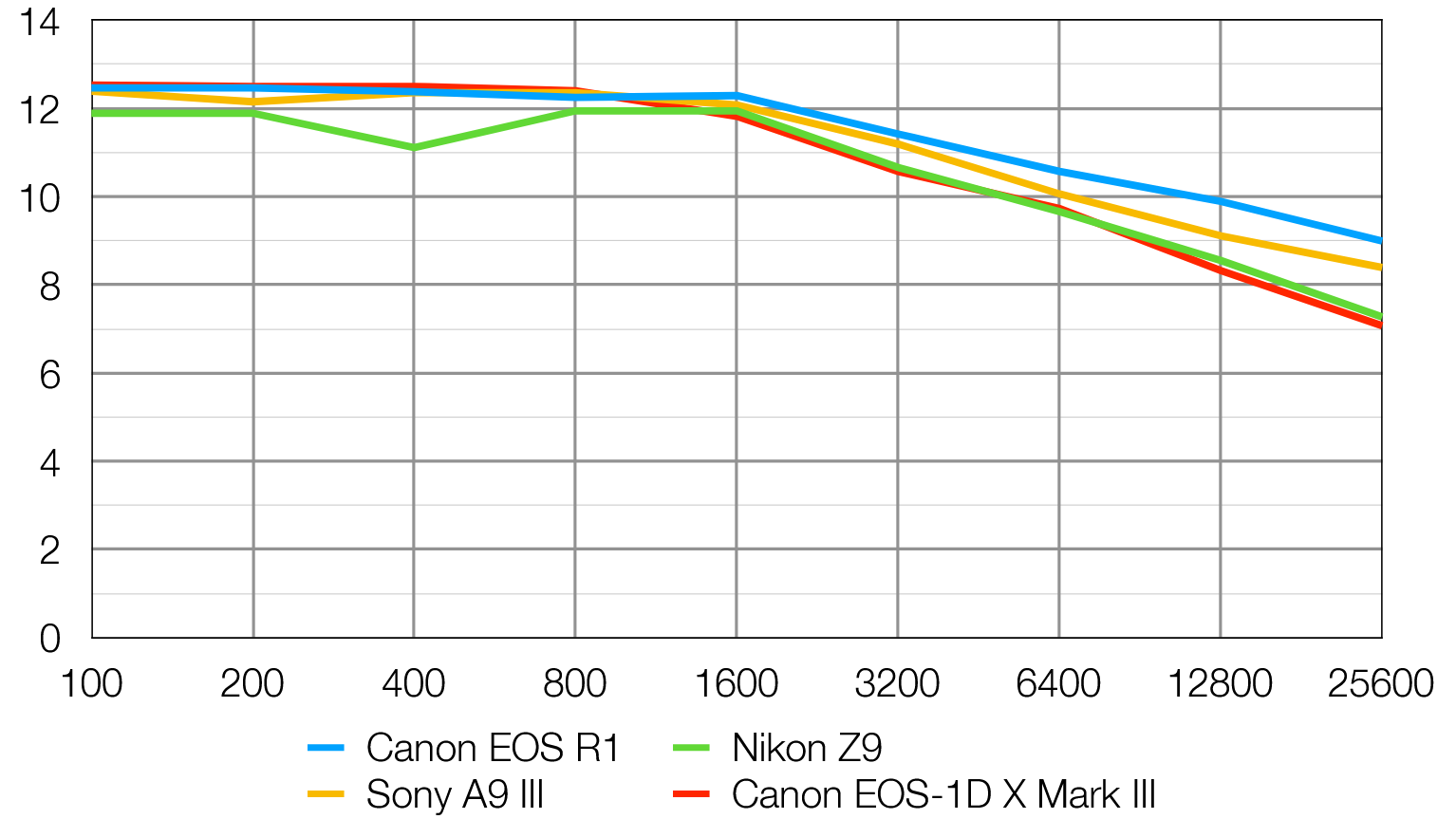
Dynamic range is a measure of a camera's ability to record extreme brightness ranges and still retain detail in the brightest and darkest parts of the scene. It's measured in EV (exposure values, or 'stops').
Though the EOS R1 and the old EOS-1D X III are as good as tied for dynamic range capture at lower sensitivities, when the light dims the newer camera has a clear advantage. It's able to capture as much as 2EV more dynamic range that its DSLR sibling once you reach ISO 25600. The Sony A9 III is the only camera here that can get close to the EOS R1 for dynamic range at higher sensitivities.
Signal to noise ratio (decibels):
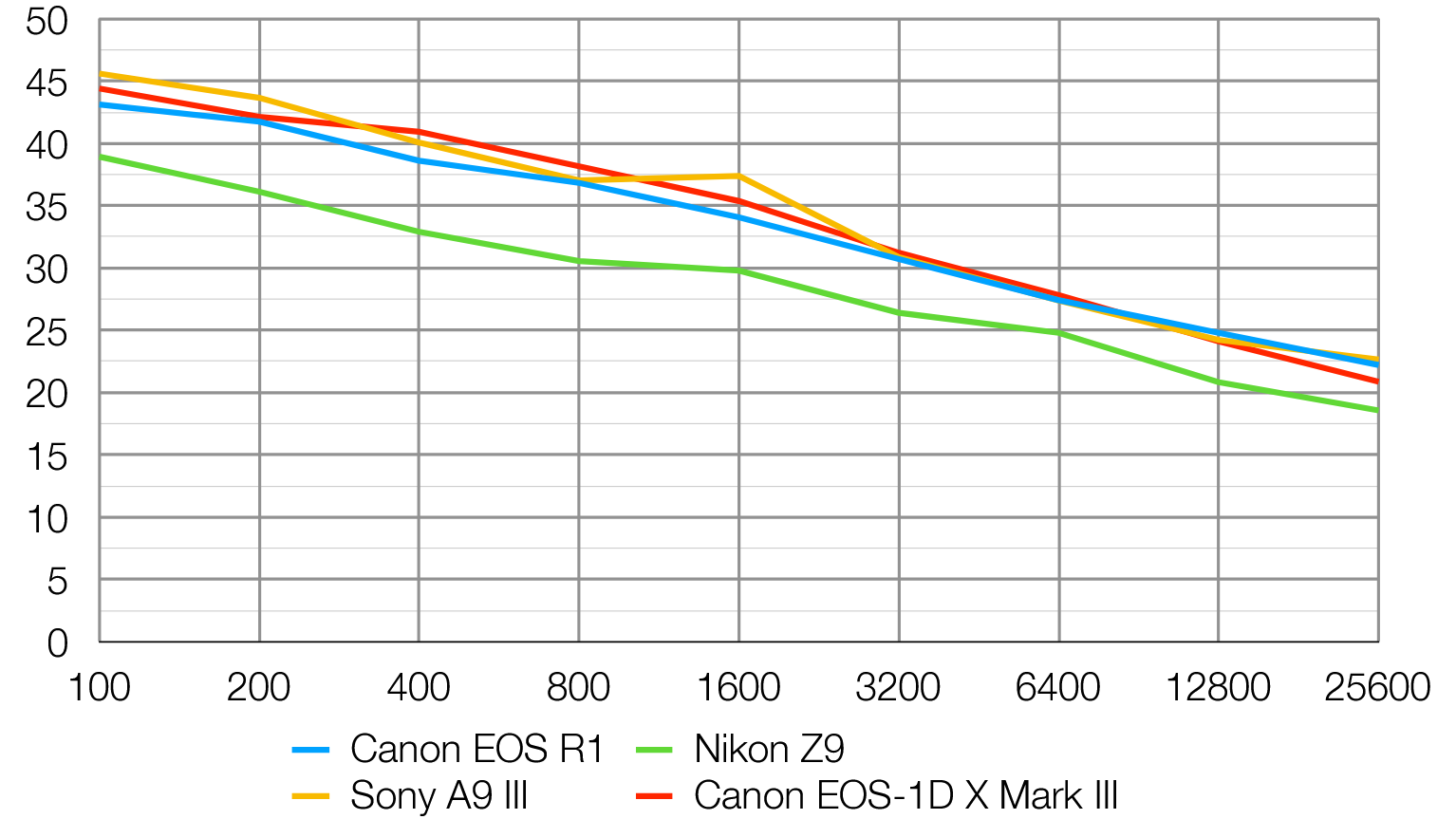
This test compares the amount of random noise generated by the camera at different ISO settings as a proportion of the actual image information (the 'signal'). Higher values are better and we expect to see the signal to ratio fall as the ISO is increased.
DSLRs may be a dying breed, with Canon no longer investing in the technology, but in this test the EOS-1D X III proves itself to be far from obsolete. Despite being launched in early 2020, it manages to produces marginally cleaner images than the EOS R1 at lower sensitivities, and you'll struggle to see any difference in noise levels right up to ISO 25600.
Canon EOS R1: Verdict
When I think about it, the point I made above about Blur Detection is really less a quibble than it is a ringing endorsement: I shot 3,525 images on a camera I'd never used before and I got a 100% hit rate while photographing sport. Basketball, at that, which next to combat sports might be the trickiest of all for a camera to shoot.
That right there is probably the best endorsement I can give the Canon EOS R1. For all the bleeding-edge bells, for all the high-tech whistles, for all the amazing algorithms and clever computations, you don't actually need to know about or understand any of it: this camera just plain works. You point it at your subject, it makes sure everything is in focus, and you can just get on with taking images.
Four years ago, I proclaimed the original EOS R5 "a cheat code for wildlife photography". Well, I'm proclaiming today that the Canon EOS R1 is a cheat code for sports photography. It will make life easier for elite agency photographers and aspiring amateurs alike. And if you shoot basketball, soccer or volleyball, sheesh – it's not even a question of if you should buy this camera, it's a question of when.
Canon's latest flagship has been worth the wait, and it didn't even need to keep up with the Joneses when it came to burst speed. Other brands worked harder, but Canon worked smarter – and the R1 is all the better for it.
You're probably going to be interested in the best lenses for the Canon EOS R1, along with the best Canon RF lenses for EOS R bodies like this one. You might also be interested in the best cameras for sports photography and the best professional cameras.

James has 25 years experience as a journalist, serving as the head of Digital Camera World for 7 of them. He started working in the photography industry in 2014, product testing and shooting ad campaigns for Olympus, as well as clients like Aston Martin Racing, Elinchrom and L'Oréal. An Olympus / OM System, Canon and Hasselblad shooter, he has a wealth of knowledge on cameras of all makes – and he loves instant cameras, too.
You must confirm your public display name before commenting
Please logout and then login again, you will then be prompted to enter your display name.
